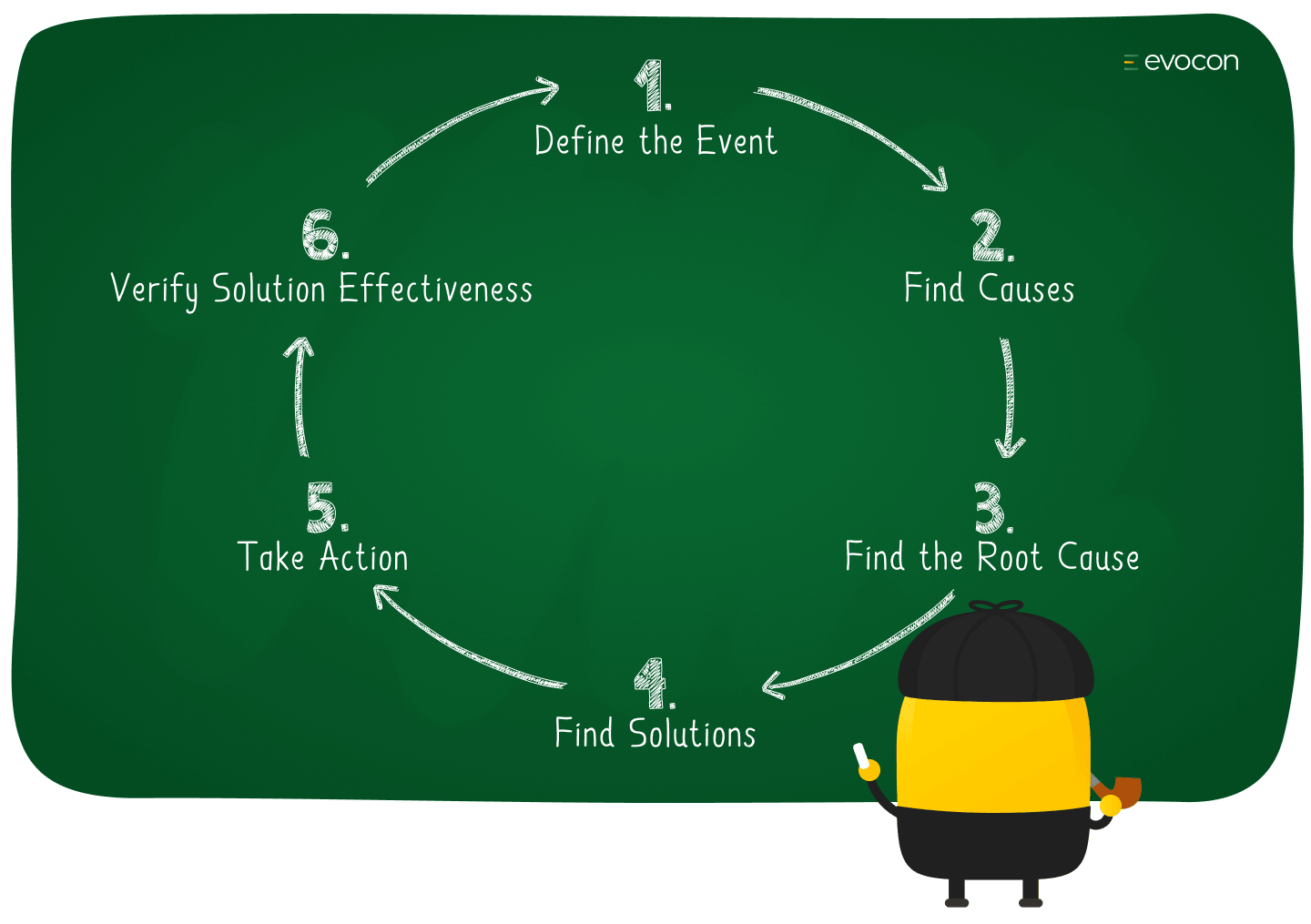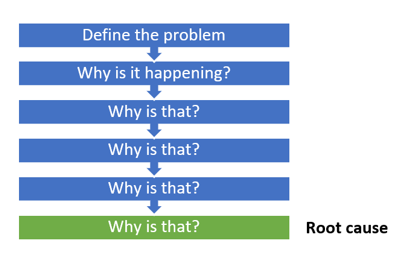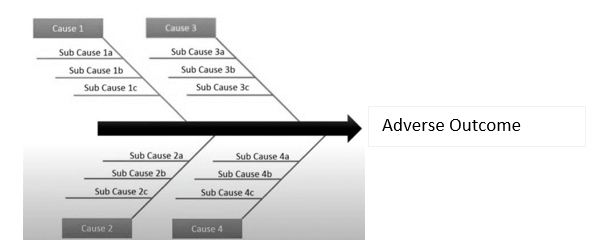10 Which Element Includes the Use of Root Cause Analysis
RCA is logical and fact-based avoids speculation and dives deeply into the chains of events that cause errors. Five Elements of QAPI Element 1.

How To Perform Root Cause Analysis In 6 Steps Evocon
Supervisors try to understand contributing factors of any system or process failure.

. Design and Scope A QAPI program must be ongoing and comprehensive dealing with the full range of services offered by the facility including the full range of departments. Root cause analysis is a structured team process that assists in identifying underlying factors or causes of an adverse event or near-miss. Failure mode and effects analysis One performance indicator that you use is the facilitys fall with injury rate.
Materials defective raw material Man Power lack of knowledge or skill MachineEquipment defective equipment or tools Environment orderly workplace physical demands of the task Management poor management involvement stress demands. Step 4 conduct fact-finding investigation interviews chart literature reviews. Comprehensive Systemic Actions to prevent future events and promote sustained improvement.
Patient information that is accessible and accurate Drug information that is accessible accurate and usable. Individual risk screening conducting investigations root cause analysis and the use of data to identify risk patterns and trends. Step 3 Specify needed information timeline and person responsible.
Healthcare Cause Mapping Template Download Healthcare Cause Mapping Template Below Excel. In-depth analysis as needed to understand the. It took only about ten years to solve the stratospheric ozone hole problem.
Manufacturing machine failure analysis industrial engineering and robotics industrial process control and quality control information technology software testing incident management cybersecurity analysis complex event processing. It can be used when Managers need to identify the root cause of a problem. At the heart of this paradigm lies the abstraction of systemic change resistance and the use of root cause analysis.
Root cause analysis RCA is a rigorous structured approach for identifying why a problem occurred in the first place and what to do so it does not recur. Root Cause Analysis 3D is designed for use by any employee in any industry. Guides to RCA are available online such as a mini-guide that includes.
You have determined that a rate over 2 puts your facility at risk for negative outcomes so anything above this rate will be addressed. A fishbone diagram is used to conduct a cause-and-effect analysis. People issues avoid blame 4 identify the preceding causes of relevant procedure violations identify normal operating procedures.
Some of them are. Step 1 Initial sequence of events. Step 2 identify information gaps use triage questions.
If change resistance is medium Classic Activism works but takes awhile. Aside from the healthcare field many other industries use root cause analysis regularly. Basic elements of a root cause are divided into different categories with examples of each in parentheses.
Root cause analysis A systematic procedure that uses the results of the other analysis techniques to identify the predominant cause of the accident Causal factors The agents that directly result in one event causing another Failure mode and effect analysis FMA. Equipment or supply factors environmental factors rulespolicyprocedure factors and. Major categories often include.
Must 1 clearly show cause and effect not met 2 be specific and accurate avoid negative and vague words like wrong bad careless etc 3 identify the preceding causes of human error identify systems vs. The investigation to determine root causes begins with containment then continues with preservation of scene of failure identifying an anomaly investigation lead a preliminary investigation an appropriate investigation team composition failure definition collectionanalysis of data available before the failure establishing a timeline of. When fully implemented the program should address clinical care quality of life resident choice and care transitions.
It includes a detailed problem outline a timeline a why question analysis diagrams to help illustrate the process sections for proposing and evaluating possible solutions and a section for creating an action plan. The most immediate or obvious cause is mistakenly identified as the root cause when instead it is simply the most proximate contributory cause which itself has much deeper roots. Its uptake in healthcare has allowed for more accurate and rapid assessment of potential and actual causes of patient harm.
Develop policies and procedures and use Root Cause Analysis. Often blame is first centered on an individual. The Causal Analysis Program elements include.
Root cause analysis can be used to uncover factors that lead to patient safety events and move organizations to deliver safer care. This element includes a focus. Please note that a risk management plan is not a policy and should include all of the element൳.
It enables teams to identify potential and real causes that are further investigated to determine the root cause. Determining the level of Causal Analysis and Team Members a Scoping and Chartering the Analysis Performing the Causal Analysis a Kick-off Meeting b Causal Analysis Methodology c Factual Accuracy Review Performing Extent of Condition Review. A An introduction and usage guide.
When performing a root cause analysis the following 10 key elements 7 that affect the core medication use steps should be thoroughly evaluated to determine the cause of the error. Understanding the contributing factors or causes of a system failure. Go back andforth between Step 3 and Step 4 if needed.
If change resistance is low ClassicActivism works quickly.

7 Powerful Problem Solving Root Cause Analysis Tools

Root Cause Analysis Tracing A Problem To Its Origins By Tahmina Naznin Cybridge Geeks Medium
0 Response to "10 Which Element Includes the Use of Root Cause Analysis"
Post a Comment